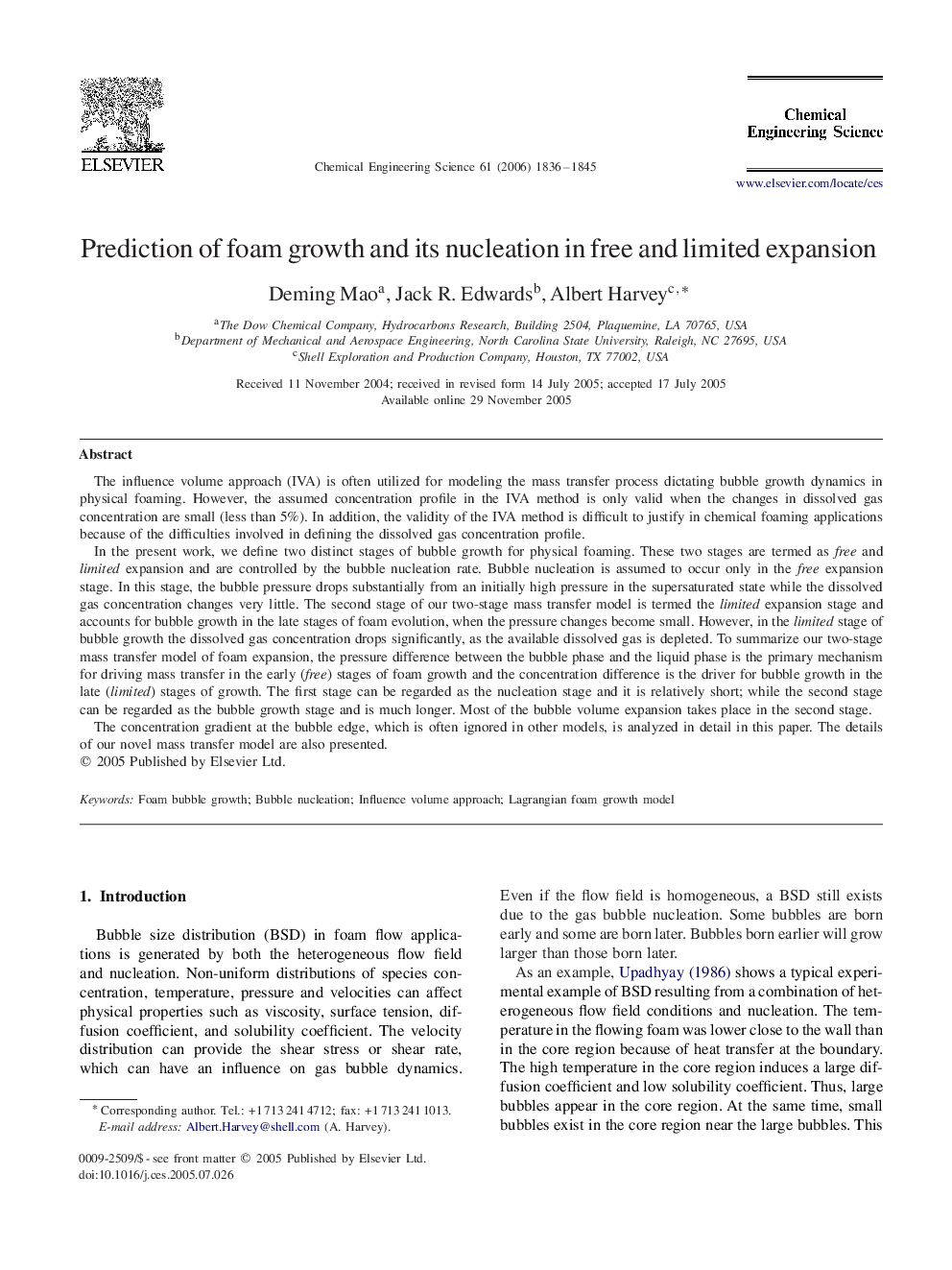| کد مقاله | کد نشریه | سال انتشار | مقاله انگلیسی | نسخه تمام متن |
|---|---|---|---|---|
| 160918 | 457105 | 2006 | 10 صفحه PDF | دانلود رایگان |

The influence volume approach (IVA) is often utilized for modeling the mass transfer process dictating bubble growth dynamics in physical foaming. However, the assumed concentration profile in the IVA method is only valid when the changes in dissolved gas concentration are small (less than 5%). In addition, the validity of the IVA method is difficult to justify in chemical foaming applications because of the difficulties involved in defining the dissolved gas concentration profile.In the present work, we define two distinct stages of bubble growth for physical foaming. These two stages are termed as free and limited expansion and are controlled by the bubble nucleation rate. Bubble nucleation is assumed to occur only in the free expansion stage. In this stage, the bubble pressure drops substantially from an initially high pressure in the supersaturated state while the dissolved gas concentration changes very little. The second stage of our two-stage mass transfer model is termed the limited expansion stage and accounts for bubble growth in the late stages of foam evolution, when the pressure changes become small. However, in the limited stage of bubble growth the dissolved gas concentration drops significantly, as the available dissolved gas is depleted. To summarize our two-stage mass transfer model of foam expansion, the pressure difference between the bubble phase and the liquid phase is the primary mechanism for driving mass transfer in the early (free) stages of foam growth and the concentration difference is the driver for bubble growth in the late (limited) stages of growth. The first stage can be regarded as the nucleation stage and it is relatively short; while the second stage can be regarded as the bubble growth stage and is much longer. Most of the bubble volume expansion takes place in the second stage.The concentration gradient at the bubble edge, which is often ignored in other models, is analyzed in detail in this paper. The details of our novel mass transfer model are also presented.
Journal: Chemical Engineering Science - Volume 61, Issue 6, March 2006, Pages 1836–1845